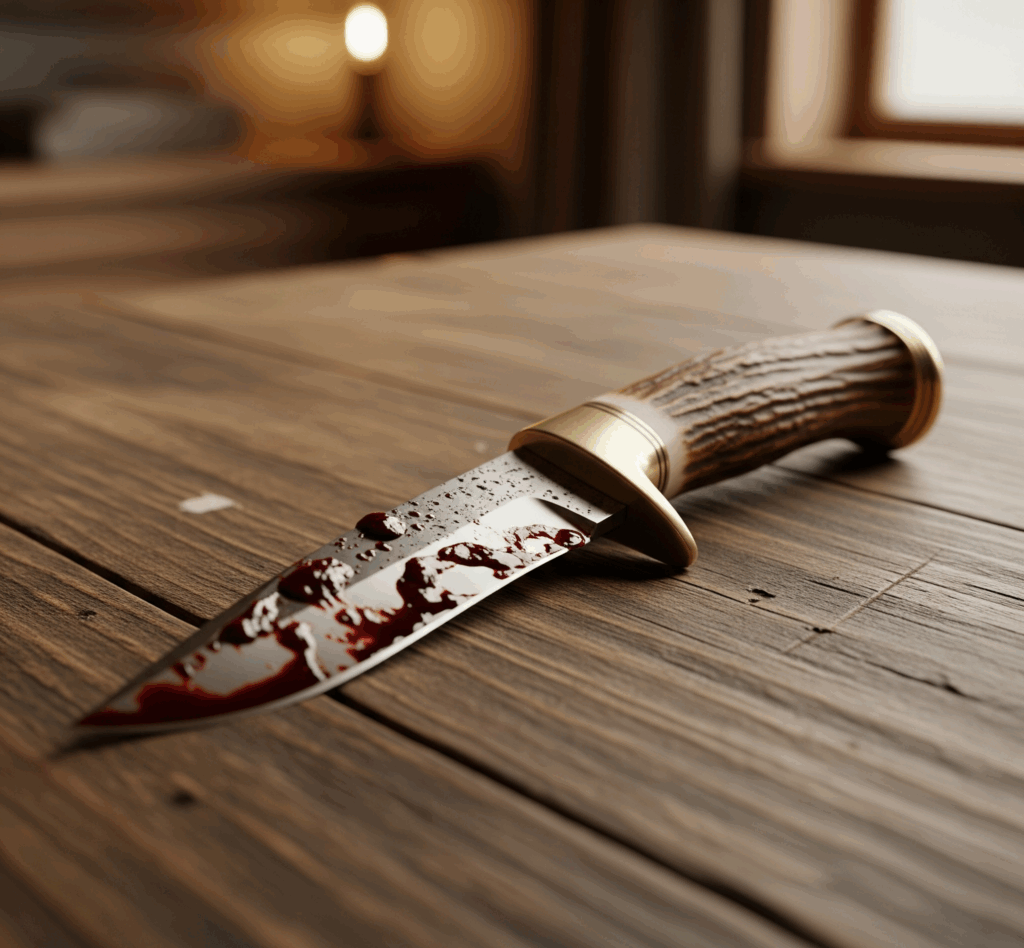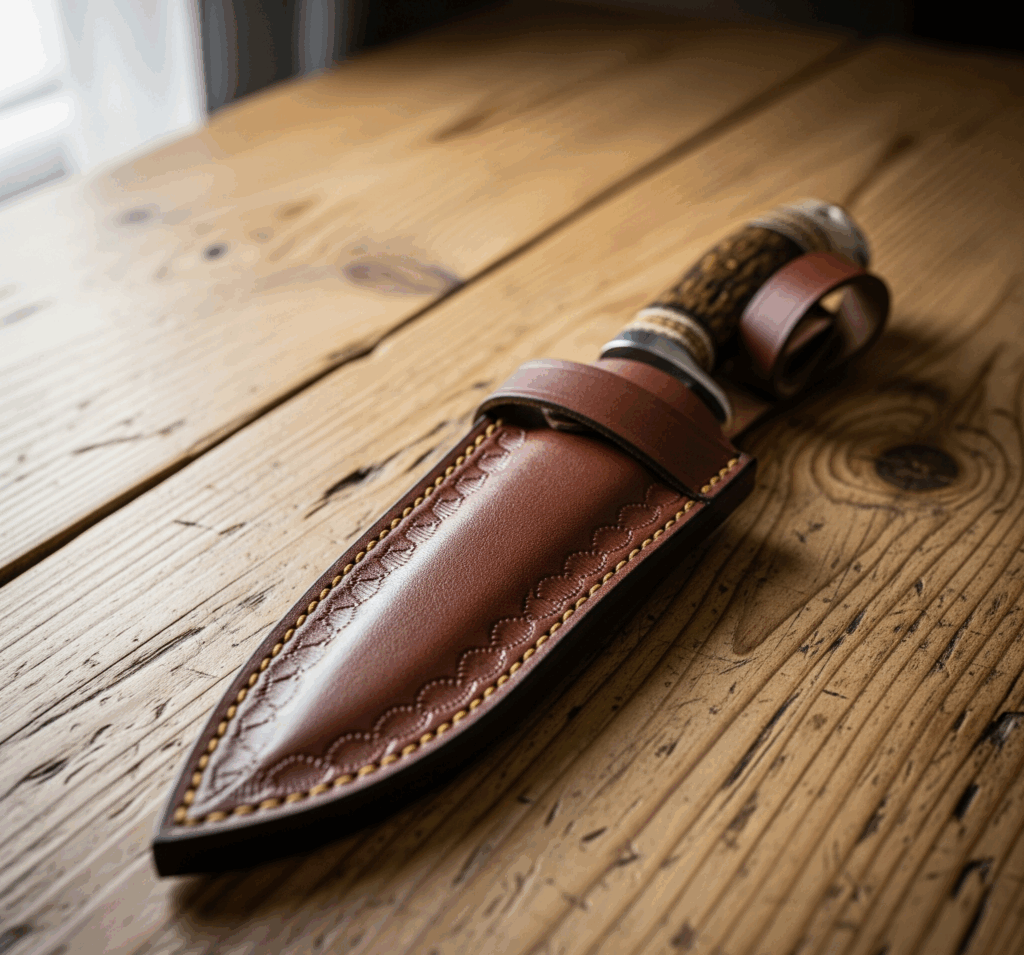By a Man Who’s Seen What a Blade Can Do — and Knows What It Can’t

Let me say this plainly, without drama, without ego, and without the soft lies people tell themselves in dojos and YouTube videos:
If you’re in a knife fight, you’ve already lost.
Not because you’re weak. Not because you lack “technique.”
Because a knife isn’t a tool for dueling.
It’s a weapon of aggression, speed, and asymmetry.
And in the hands of a determined attacker — or even a panicked one — it doesn’t care about your belt color, your stance, or your confidence.
So this isn’t a post about “disarming” someone in three moves.
This is a field report from the edge of violence — for men and women who want to survive, not play warrior.
Let’s cut through the fantasy.
The Myth: “I Can Defend Myself With My Hands”
You’ve seen the videos.
The calm instructor, smiling, as a student “attacks” with a rubber knife — slow, predictable, telegraphed like a man asking permission.
Then — whoosh — the defender twists, blocks, disarms, bows.
Impressive?
On a mat?
With consent?
Yes.
Useful in a real attack?
No.
Because real violence doesn’t come with rules.
It comes in the dark.
It comes from behind.
It comes fast, loud, and without warning — and the man holding the knife doesn’t want to fight you.
He wants to hurt you.
And in that moment, no amount of “wrist control” or “pressure points” will stop a blade from opening your throat, your belly, or your femoral artery.
Most so-called “knife defense” taught in martial arts is ritual, not reality.
It’s theater.
It’s hope dressed as training.
And hope is not a survival strategy.
The Reality: A Knife Fight Is Over in Seconds
Let’s be clear:
A knife is not a sword.
It’s not for fencing.
It’s a close-quarters tool of damage — used for slashing, stabbing, and ripping.
And here’s the truth they won’t tell you in self-defense seminars:
The average knife attack lasts 6 seconds.
In that time, a determined attacker can deliver 6–10 wounds.
You will not see them all.
You will not block them all.
You will not walk away unharmed — if you walk away at all.
This isn’t speculation.
It’s data.
From ERs. From coroners. From police reports.
And the most common injury in a knife attack?
Not the chest.
Not the arms.
The legs and abdomen — because that’s where a slashing attack lands when someone rushes you.
So if you’re thinking about “controlling the weapon hand,” ask yourself:
Can you control six motions in two seconds?
While bleeding?
While scared?
While falling?
No.
You can’t.
The Lie: “Carrying a Knife Makes Me Safer”
Here’s another hard truth:
Carrying a knife does not make you safer.
It makes you responsible.
Because most people who carry a knife have never trained with it under stress.
They’ve never tried to draw it with cold hands.
Never practiced against a surprise grab.
Never felt the weight of a real decision: Do I cut this man to survive?
And in a crisis, hesitation kills.
So let me be clear:
- If you carry a knife, you must train — not in forms, but in function.
- You must know the legal and moral weight of using it.
- And you must accept that drawing it may make you the “aggressor” in the eyes of the law — even if you’re defending yourself.
Because a knife is not a keychain toy.
It is a tool of last resort.
And like any weapon, it demands respect — not just for its power, but for its consequences.

So What Actually Works? (Spoiler: Run)
If you’re serious about survival — here’s what matters:
1. Avoidance > Technique
Your best defense is not being there.
Scan parking lots. Trust your gut. Walk away from arguments.
Most knife attacks happen in heated moments — bar fights, domestic disputes, robberies.
Remove yourself.
Every second you delay is a second you survive.
2. Distance Is Your Ally
A knife needs you close.
You need to be far.
If someone pulls a blade, move diagonally — not straight back.
Create angle. Create space.
Then run.
Not “retreat.” Not “disengage.”
Run.
3. Use Objects as Barriers
Bag, jacket, backpack, briefcase — anything between you and the blade.
Hold it in front. Use it to block, distract, or buy a second to escape.
4. If You Must Fight — Aim to Escape, Not Win
No disarms. No fancy moves.
Strike the eyes, throat, or groin — anything to create a gap.
Then leave.
Do not stay to “finish it.”
There is no “finish.”
There is only survival.
5. Train — But Train Realistically
If you carry a knife, train with a trainer who uses simulated blades, stress drills, and scenario-based practice.
Not forms. Not kata.
Reality.
Final Truth: The Only Winning Move Is Not to Fight
The strongest man in the world cannot reliably survive a committed knife attack.
Not with hands.
Not with “technique.”
Not with a pocket knife drawn too late.
But the smartest man?
He’s already gone.
Because real self-defense isn’t about courage.
It’s about preservation.
It’s knowing when to walk away, when to run, and when to live — even if it means someone calls you “coward.”
Let them.
You’ll be home for dinner.
And that’s the only victory that matters.
